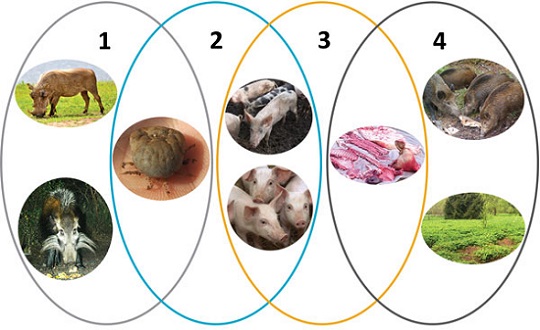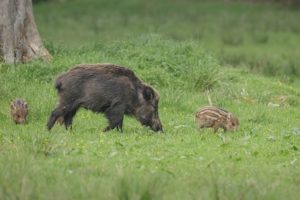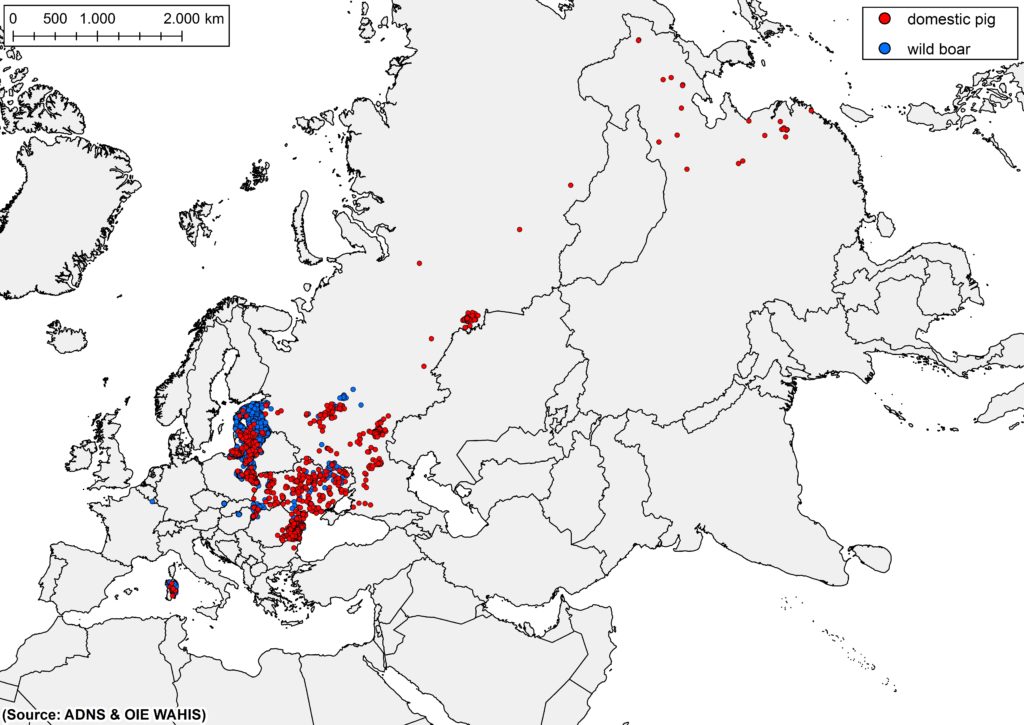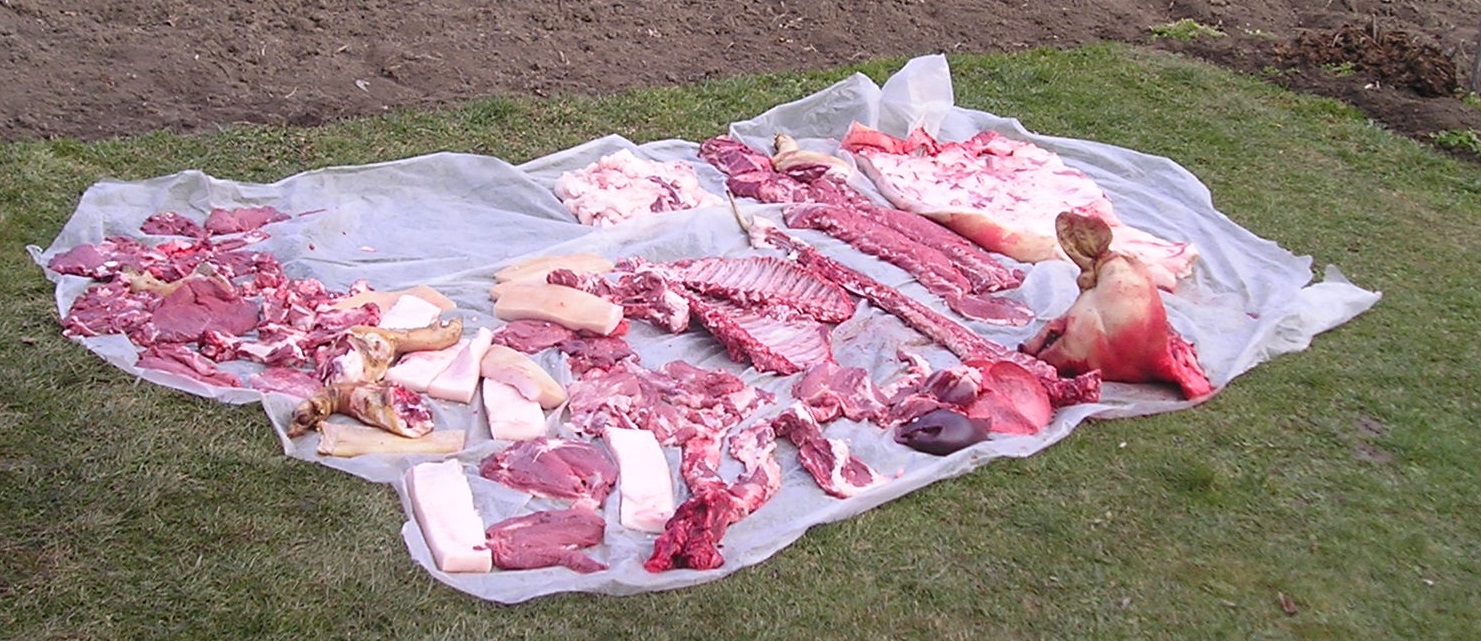
African swine fever (ASF) epidemiology is a complex affair. It involves several different wild and domestic suid species as well as a soft tick, and is largely dependent on the environment, pig products or humans for both persistence and long-distance spread. The role of wild boar and their habitat in ASF transmission was recently described, and illustrated in epidemiological cycle 4 in the image above.

In the wild boar–habitat epidemiological cycle, the qualities of three epidemiological traits: contagiousity, tenacity, and case fatality rate, make ASF virus efficient in both persistence and transmission. High tenacity ensures long term virus persistence in the environment, high case fatality rate makes the virus largely available in the form of many carcasses, and the relatively low contagiousity prevents the complete depletion of the host population. The interaction of these three parameters maximize local persistence and limits fast geographical spread of the virus within an affected population. Through these traits, the current ASF epidemic in Europe is maintained locally, with a low but steady presence within the wild boar population and their habitat, making its eradication a challenge.

At the same time, humans act as a main driver of disease transmission, responsible for virus introduction to domestic pig farms and long-distance transmission jumps. By transporting contaminated meat and discarding meat products so that they end up as waste or kitchen leftovers in pig stables or in nature inhabited by wild boar, humans have managed to spread the disease as far from the point of introduction in Georgia as to Belgium in the west, the arctic circle in the north, and China in the east.
even when the disease is known to all stakeholders, and these people know a lot about ASF, transmission continues
Research from other contexts (smallholder pig farmers in eastern Africa) show that even when the disease is known to all stakeholders, and these people know a lot about ASF, transmission continues. It turns out that factors other than knowledge guide decisions that will affect disease dynamics (such as what and where to trade or slaughter and how to implement biosecurity protocols).
We believe that these practical demonstrations of common human reasoning and behavior are highly generalisable, and valid also for the current epidemic in Europe and Asia. Day to day livelihood circumstances prevent farmers from executing preventive actions they are aware of, and may even force farmers to take actions that promote disease transmission, such as illegal slaughtering and trade of pigs in areas under restriction.
As for many other questions in modern farming reality, decision making process for disease control is complex. It includes not only economic aspects, but cultural identity, tradition, peer pressure, quality of the relationship with authorities and animal welfare.
When outbreaks are confirmed, governments impose control measures such as stamping out of diseased and contact animals, quarantine, trade- and movement restrictions. Without sufficient compensation, enough consideration payed to culture and to community practices, such action might actually be counteractive. Trade will not necessarily cease after a quarantine has been put in place, but move to uncontrolled markets, or more distant points of sales, increasing disease transmission instead of preventing it.

It is clear that veterinary knowledge alone is not sufficient to achieve disease control and that understanding local sociocultural, economic and political dimensions is equally important
ASF was first described in 1921. Since then, almost a century of research has focused on its virology, pathology and epidemiology. Apart from the (rather recent) involvement of wild boar, ASF-epidemiology is now well known. Despite this, control is not achieved. It is clear that veterinary knowledge alone is not sufficient to achieve disease control and that understanding local sociocultural, economic and political dimensions is equally important. Social sciences research and in-depth studies of local practices are increasingly recognized as important for understanding disease ecology.
The major challenge in achieving control of ASF is now not necessarily technical, but relates to the specific needs and circumstances of pig producers, traders, pork consumers, land owners, hunters and other forest users in affected areas. Control options fully adapted to the local context and highly accepted by the end users are required. Thus it becomes crucial to include social science when planning prevention-, control-, or eradication measures. By considering only the biological particularities of the disease: contagiousity, tenacity and case fatality rate, but ignoring the human aspects, the epidemic will not be controlled.
Erika Chenais, Klaus Depner, Vittorio Guberti, Klaas Dietze, Arvo Viltrop & Karl Ståhl
Latest posts by Erika Chenais, Klaus Depner, Vittorio Guberti, Klaas Dietze, Arvo Viltrop & Karl Ståhl (see all)
- Understanding humans – the key to African swine fever control - 8th January 2019
Comments